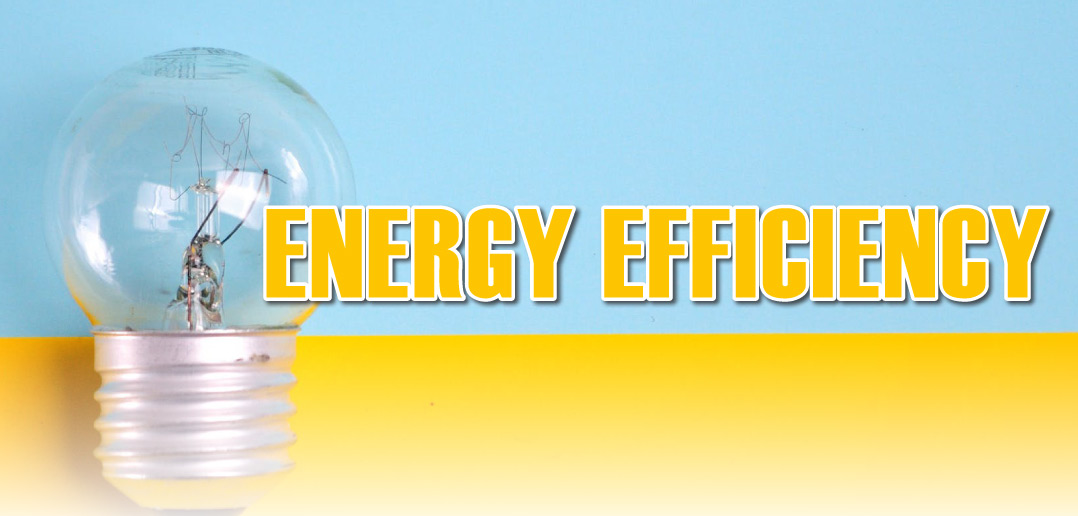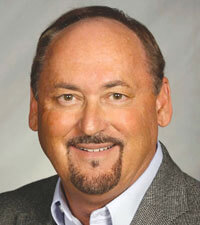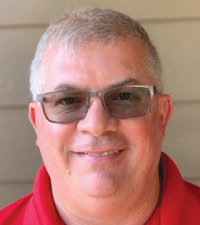Energy Efficiency
If you’re someone who finds yourself turning down the heat to counter the stress of your rising energy bill even though it means you wake up shivering in the night or your office feels like a refrigerator, here are some things you can do to bring down your bill while staying warm and being engery efficient.
The U.S. Department of Energy recommends doing a professional home energy audit to pinpoint where your home is losing energy and what you can do to save money. An audit can also assess health and safety issues that might exist in your home. Steps an energy auditor will take to assess the energy efficiency of your home include analyzing fuel bills from previous years to determine base energy consumption; interviewing you to learn about problems and how your home operates; conducting an exterior inspection, a health and safety inspection, and an interior visual inspection; assessing electrical systems for safety concerns; conducting a blower door test; and more. The Department of Energy estimates that you could save 5%–30% on your energy bill by making efficiency upgrades identified in your home energy audit.
One of the greatest culprits of heat loss in many buildings is windows, so we talked to Nate Krieser, owner of Krieser Drywall & Insulation, about an exciting new service they’re offering that can make a home more energy efficient and seal up air leaks around windows, outlets, joints, studs, or anywhere else that may be difficult to find, let alone fix, through traditional methods.
“We have just announced that we will be offering a cutting-edge product, AeroBarrier, a breakthrough envelope sealing technology,” he said. “Improving the building envelope of a house is one of the best ways to get better energy efficiency, and AeroBarrier technology transforms the way we seal the building envelope which makes the process easier, more effective, and less expensive. Normally, achieving energy savings from building envelope enhancements is very difficult and costly to achieve. With AeroBarrier, this is no longer a problem. This is HUGE.”
AeroBarrier technology uses positive pressure and automated sprayers to create an acrylic sealant that can seal all gaps in a building less than ½ inch in just a few hours. While this is easily done in unfinished houses and construction projects, it can be used for finished houses too, as long as all horizontal finished surfaces are covered. Another amazing bonus is that AeroBarrier is GREENGUARD Gold certified, which means it is very environmentally-friendly—even better than simply being GREENGUARD certified.
For unfinished construction projects, Nate explained that blower testing can often cause a lot of stress, but this new technology helps eliminate this: “AeroBarrier technology can now take the worry out of passing a blower test, and we are the only company in the region offering this service. Our company is constantly striving to bring the latest technology to our customers for energy efficiency and savings. We are so excited to offer this new service. AeroBarrier technology seals your home or building to your specifications with real-time results. This takes out the guess work while saving you money.”
Another solution is the highly efficient triple pane vinyl windows and patio doors you can have Heartland of Nebraska Windows install.
“Our Heartland Triple Pane Windows and Patio Doors have reduced our customers’ energy bills by 45% or more,” Gary Shunkwiler, owner of Heartland of Nebraska Windows, informed us. “Most people look at purchasing new windows as an expense, but with our lifetime warranty triple pane windows and patio doors, our windows are an investment that will typically return its value in as little as five to seven years. Our triple pane glass package with double argon gas and ‘warm edge’ technology (seals) along with our two coats of Low-E, keeps the heat and cold outside where it belongs, and allows your energy (A/C and heat) to stay inside your home, reducing overall energy cost as well as less wear and tear on your A/C and furnace. Along with our rough opening install (we go down to the original studs), we can completely insulate and seal properly around each window and door, eliminating any potential drafts.”
Coming into the winter months, most people realize how bad their windows are and they are very tired of the constant drafts and coldness of their home. That is why this winter, Heartland of Nebraska Windows is offering a 25% discount on all their windows and patio doors. They even offer traditional financing along with a guaranteed, low-rate government energy loan. Most people are not even aware of this option, which allows them to finally be able to purchase new windows and patio doors.
“It only makes sense to do our part if we can,” Gary said. “If you can reduce your carbon footprint by purchasing our high efficiency Heartland windows and patio doors, reduce your energy bills and finally have a comfortable climate in your own home, then it’s simply a win-win for everyone.”
There are so many window companies out there to choose from, but Heartland of Nebraska Windows is a local, family-owned business that wants to help you with your window challenges.
Another common source of air leaks in many homes and buildings is attic space. We spoke to Rex Schroder with Attic Energy Efficiency for more information about the services they provide to improve energy efficiency through the attic space in your home or office building.
“Attic insulation is a highly important aspect of energy efficiency in a building that people may not consider because it’s out of sight, out of mind,” Rex said. “Our company is expertly-trained to optimize your attic space to improve temperature control in any building. By installing baffles from a soffit vent and up the rafter bay, we are able to insulate every available inch of attic floor space. Without baffles, some space would remain uninsulated and allow drafts of cold air to leak into your home or building. We can also improve ventilation and increase airflow into your attic, which reduces moisture problems and helps with temperature control. We use cellulose instead of fiberglass insulation, which has a higher R-value per inch than fiberglass.”
With over 10 years of expertise in the industry, Rex can customize services to fit your needs—and your attic! By upgrading your attic, you can improve energy efficiency in your home or office building and see big savings on your power bill. The less energy you use, the smaller your carbon footprint.
“Shrinking your carbon footprint ultimately comes down to smarter choices,” Rex said. “By using professional services that improve the energy output of your home or office, you are choosing to make wise decisions today that will benefit you and others tomorrow.”
Addison Collingsworth with Simply Smart Homes also spoke to use about how important it is to consider our carbon footprint.
“Getting started in reducing your footprint has never been easier than it is now!” Addison exclaimed. “Simply Smart Homes has lots of different products that can help people make their spaces more energy efficient and cost effective. We have things like smart thermostats, automated lighting solutions, water flow management for sprinklers, and even whole-home power monitoring.”
“Our smart thermostats often pay for themselves in just the first year or two based on the energy savings alone,” Addison shared. “Multiple independent studies have shown that smart thermostats such as Nest can save an average home anywhere from 10% to 15% on energy costs per year, leading to about $100 annually on average. Similar savings can also be found by controlling lighting carefully with automated smart switches and using intelligent sprinklers that won’t water on days when it rains. Reducing waste and making resources in your home go further is a great place to start if you want to make an impact. The cost savings alone are incentive enough, but knowing that you are also positively affecting the planet makes energy-smart practices a no-brainer. It helps your wallet and aids your community and the world, so it’s a win-win!”
We also talked to Eli Krause with TechMasters to get his take on the advantages of using a programmable thermostat.
“Programmable thermostats save quite a bit of money and use far less energy when you set up your equipment to run only when it is needed,” Eli confirmed. “In the winter months, turn your thermostat down a degree or two, and in the summer months, set your thermostat a degree or two higher than you normally would. You may not notice the difference of temperature in your house, but you will notice the difference in your monthly energy bills.”
TechMasters understand the importance of making the dollar count for customers by keeping their appliances and equipment running, which is why they offer service agreements with twice-a-year maintenance visits to keep everything running efficiently and with as little wear and tear as possible.
“Reducing our carbon footprint is more important than ever at this time,” Eli said. “Making sure our equipment is running as energy efficiently as possible is mutually beneficial for both individuals and the environment.”
This applies to our HVAC systems. All heating and cooling equipment needs to be replaced if it is not high efficiency. It should also be maintained by a qualified technician twice a year that follows specific details covered in a good service maintenance agreement.
HVAC systems use a lot of energy and contribute to the depletion of our resources. Older HVAC systems can have an AFUE rate of 70, meaning they lose 30% of their energy. Modern systems have AFUE scores of 93 or above, meaning the energy your system uses goes right into heating or cooling your home instead of being wasted.
The technicians at John Henry’s Plumbing, Heating, and Air Conditioning are NATE certified, one of the most-recognized HVAC certifications in the industry, and expertly trained in the latest industry advancements.
Humidifiers are another very important part of a heating system. Our cold Nebraska winters tend to dry out our homes and offices. Dry air increases the risks of bacteria, viruses, fungi, mold, mites, respiratory infections, allergies, and asthma. It also dries out our skin and increases wrinkles. The optimum range for relative humidity is best for your health. The Honeywell TruEase is a very good humidifier that has a bypass damper to keep air from going through it when the system is not calling for heat and also automatic water shut off valves to shut off the water. These two features save energy and improve comfort. The right humidity also increases comfort and allows the temperature to be a few degrees lower, which of course saves energy too.
Pat Killeen, owner of Engineered Controls believes both comfort and energy efficiency are achievable with the right tools.
“Today more than ever, building owners want their facilities to be environmentally responsible and healthy places to live and work,” emphasized Pat. “They also want to optimize the energy usage without compromising comfort. Together a tall order to accomplish, but at Engineered Controls that technology is available today. Furthermore, we benefit greatly from our partnership with Honeywell, a major energy products company that is spending sizable research and development funds on new products that will improve our lives and reduce energy.
Engineered Controls can play a very big part in assisting new and existing building owners with controlling their buildings’ energy costs. Considering the fact that a building’s lighting and HVAC loads account for nearly 80% of a building’s energy usage, there are plenty of energy strategies that a Building Automation System can provide maximizing the energy strategy options available to building owners. Essentially, Engineered Controls can assist in total building control and help provide a healthier and more energy-efficient environment for occupants.
“To help our customers in identifying efficiency areas in their buildings, Engineered Controls, in conjunction with Honeywell Inc., developed an Energy & Environmental Optimization (EEO) program,” Pat continued. “It is designed to leverage a broad portfolio of energy efficiency products and solutions, as well as offer a high level of energy expertise to commercial buildings in the hands of our skilled, knowledgeable and certified EEO professionals. Our EEO team can help building owners and managers obtain real-world data to help them make fact-based decisions about how to optimize their buildings for occupants’ comfort while saving energy at the same time.”
Engineered Controls also offers their customers Planned Service Agreements (PSAs) to assist them in the daily operation of their facilities. Our staff of trained experts can assist a building owner in identifying areas where they can reduce cost, identify simple potential energy savings payback opportunities, and provide training.
Jim Johnson of Biggerstaff Plumbing and Heating, Inc. had additional advice on how to reduce costs through building maintenance.
“Nothing makes us happier than a customer reporting back to us with a cost savings of 30 to 50% on their heating and cooling bills,” said Jim. “It’s important for tenants to keep on top of property maintenance because in their lease they are usually the one paying the utility bills. If a system starts to lose efficiency and capacity from a lack of maintenance the utility bills can double. We’ve seen it happen.”
Jim offered advice to tenants on how to protect themselves from high costs:
- Ensure filters and condensate lines are checked regularly: Clean filters in regular intervals are a must. Properly flowing condensate lines need to be checked as often as the filter gets changed….Ceiling/water damage will anger most office managers and it’s very avoidable by having the equipment regularly maintained.
- Remember the two major energy burners: The two biggest power consumers in any commercial office building are the lights, and the heating and cooling. More efficient light fixtures using LED technology are available, and as heating and cooling go, high efficiency equipment with modulating/inverter technology is also available.
- Consider how often your building is used: The way the building gets used is the biggest factor in determining how often the equipment should have scheduled maintenance. Some of our customers require quarterly maintenance and some just twice a year.
- Check that your refrigerator coils are cleaned: Most of today’s refrigerators have a coil underneath them that needs to be cleaned. I’ve never opened one that’s been running for at least a year that wasn’t a blanket of dust.
Jim emphasized that professional maintenance can not only help these systems work better and last longer, it also promotes the health of everyone who uses the building.
“Better quality filters and Indoor air quality products make for a healthier home or work environment,” he said.
Maintaining HVAC systems is also an important factor in energy efficiency. Aaron Rood is a residential development manager for Lincoln’s Star City Heating & Cooling. Rood believes in offering top service to customers without overcharging them: “We help homeowners and commercial property owners with all their heating and cooling needs, whether it be service, repair, or replacement. Our technicians don’t work on commission and we make recommendations based on the client’s best interests, not our profit.”
Finding the best option for heating service can significantly lower your power bill. So can switching to energy-efficient lighting, according to the U.S. Department of Energy. They encourage people to replace their most frequently used light fixtures or bulbs with ENERGY STAR models to enjoy significant savings each year. Rick Sebek, owner of Sebek Lighting & Electronics, gave us more information about LED lighting, one excellent option in energy-efficient lighting that lasts 15 to 25 times longer than traditional incandescent bulbs.
“When converting from traditional lighting to LED lighting you will see a 60% savings in the electricity used by lighting,” he said. “Converting to LED would also eliminate the cost of maintaining your existing lighting, such as bulb or ballast replacements.”
All of the products manufactured for Sebek Lighting and Electronics meet industry standard warranty against factory defects. With international buying power, Sebek Lighting & Electronics can get you what you need for your remodeling project right here in Lincoln. They buy direct from the manufacturer and pass on their savings to their customers. All of their lights come with a five-year or 50,000-hour warranty. They want to ensure that their customers get the most value for their dollar.
“We offer high quality LED lighting for commercial and industrial applications. We can assist with new construction or convert existing properties to LED lighting. Depending on availability of funds, we can also get you a rebate from LES if converting interior lighting,” Rick said.
Sebek Lighting also understands the importance of reducing our carbon footprint. “Anytime we can reduce the amount of electricity that is needed, we do our part in reducing the carbon generated for producing electricity,” Rick said.
Our understanding of the importance of energy efficiency is growing as rapidly as our need for it. You may find that you wish to do more to reduce your carbon footprint than you currently are, or you may be waking up to the realization of how beneficial energy efficiency can be for your finances! Perhaps you are making plans for the energy-efficient office building or home of your dreams. Sandhills Global has set a standard in the design of their new energy-efficient buildings that is admirable in both practicality and function as well as aesthetic. There is much we can learn from their approach to design.
Sandhills Global has designed a truly green campus with three new buildings that take energy efficiency to a whole new level—each is Gold-certified by the U.S. Green Building Council’s LEED (Leadership in Energy and Environmental Design) program, the most widely-used green building rating system in the world. Sandhills received this distinction based on their attention to water efficiency, energy consumption and atmosphere quality, their building materials and where they were sourced, and indoor environmental quality, among other things.
The design for the three new buildings was executed with precision and breathtaking clarity. The facilities have been constructed largely of recycled and reclaimed materials with energy-efficient features including solar panels, light harvesting sensors, and motion sensors to control plumbing and electricity. The buildings are also heated and cooled by a cutting-edge system that uses a closed-loop geothermal wellfield. They have even included a living roof above the parking garage that is watered in part by rainwater collected in a nearby cistern. Sandhills has considered everything with no sacrifice to beauty and comfort! Truly, energy efficient living is the way of the future.
By connecting with local energy experts, you can achieve energy efficiency in your home or business. Lower your energy bill while also doing your part to keep our planet beautiful!









